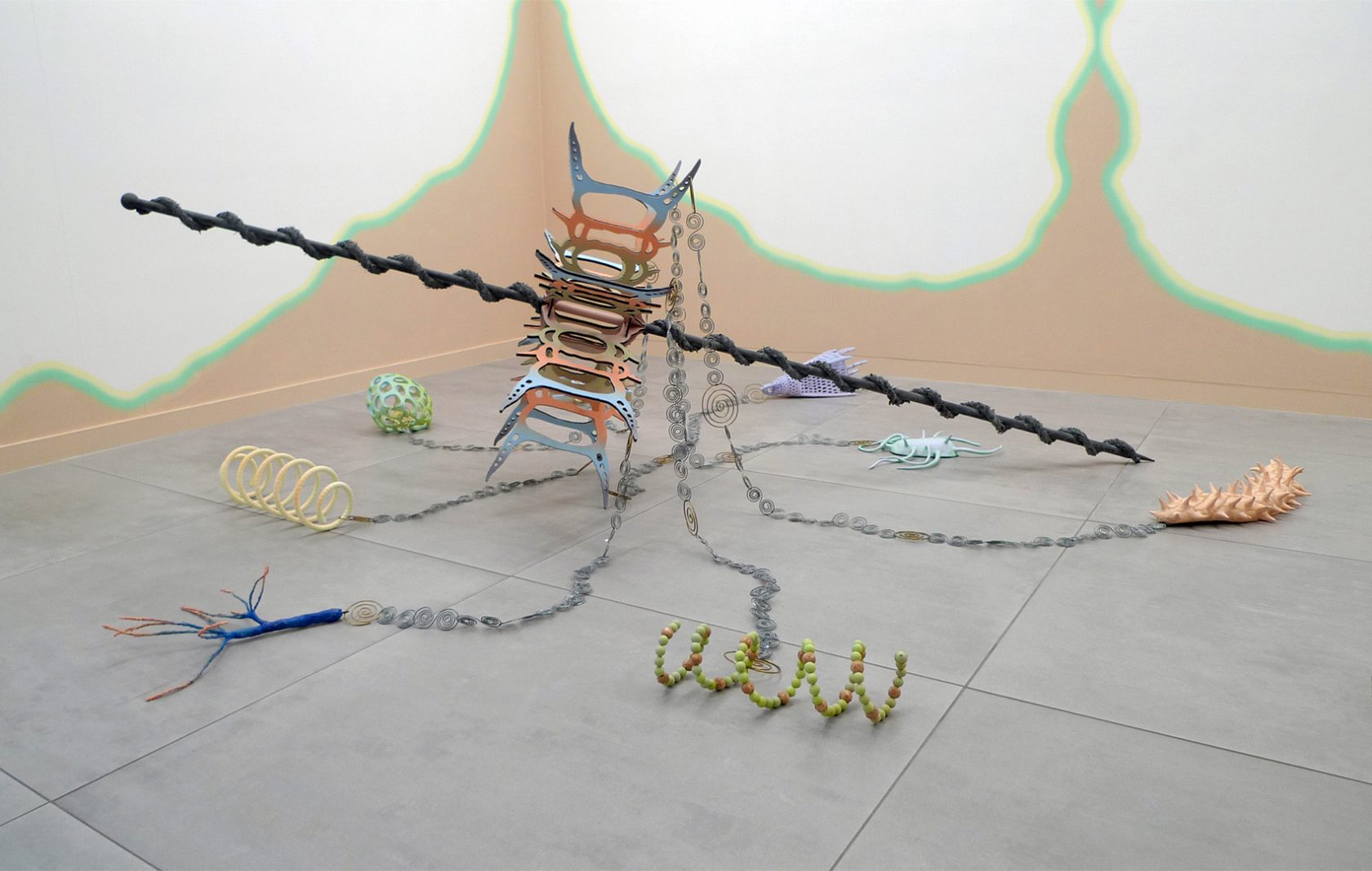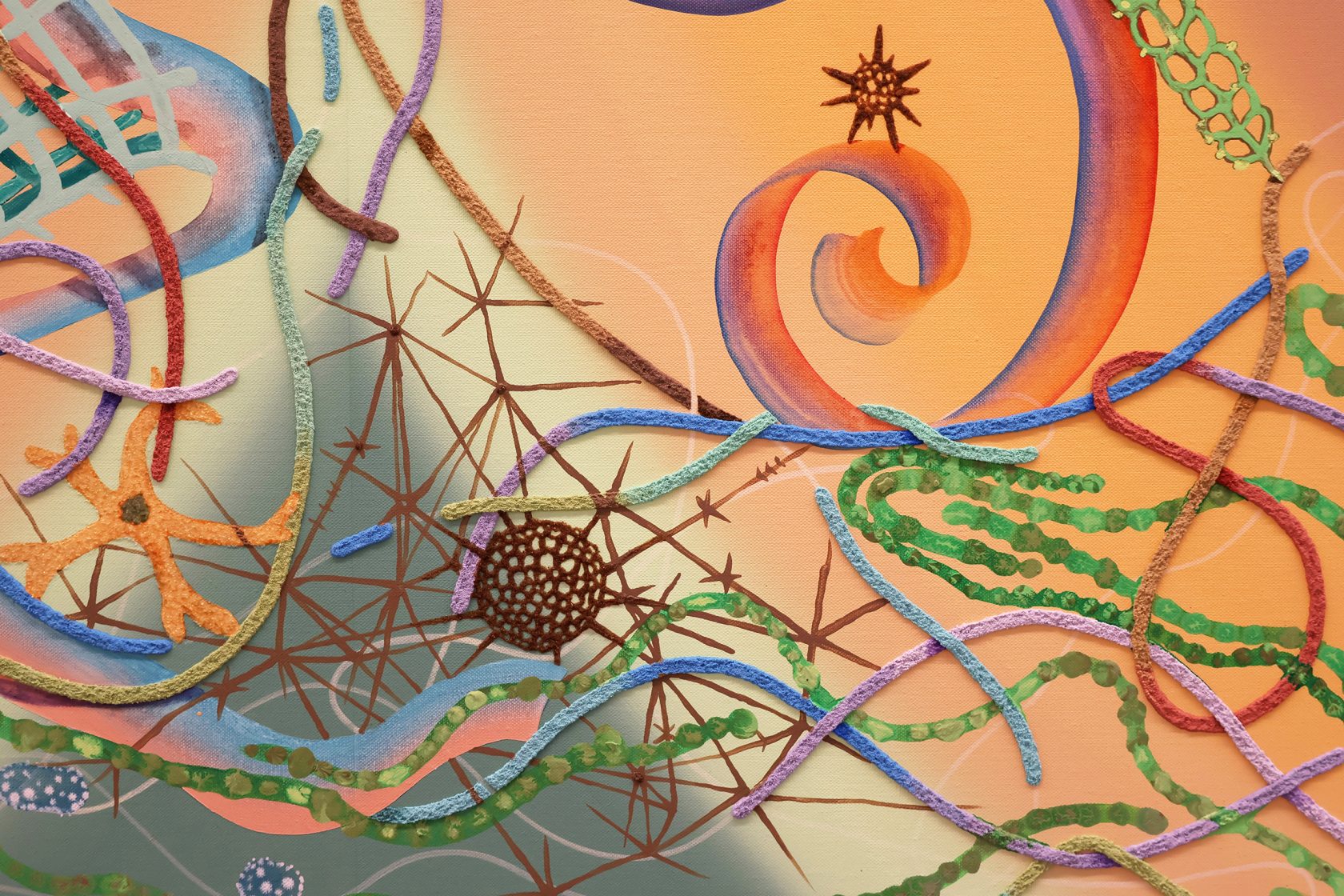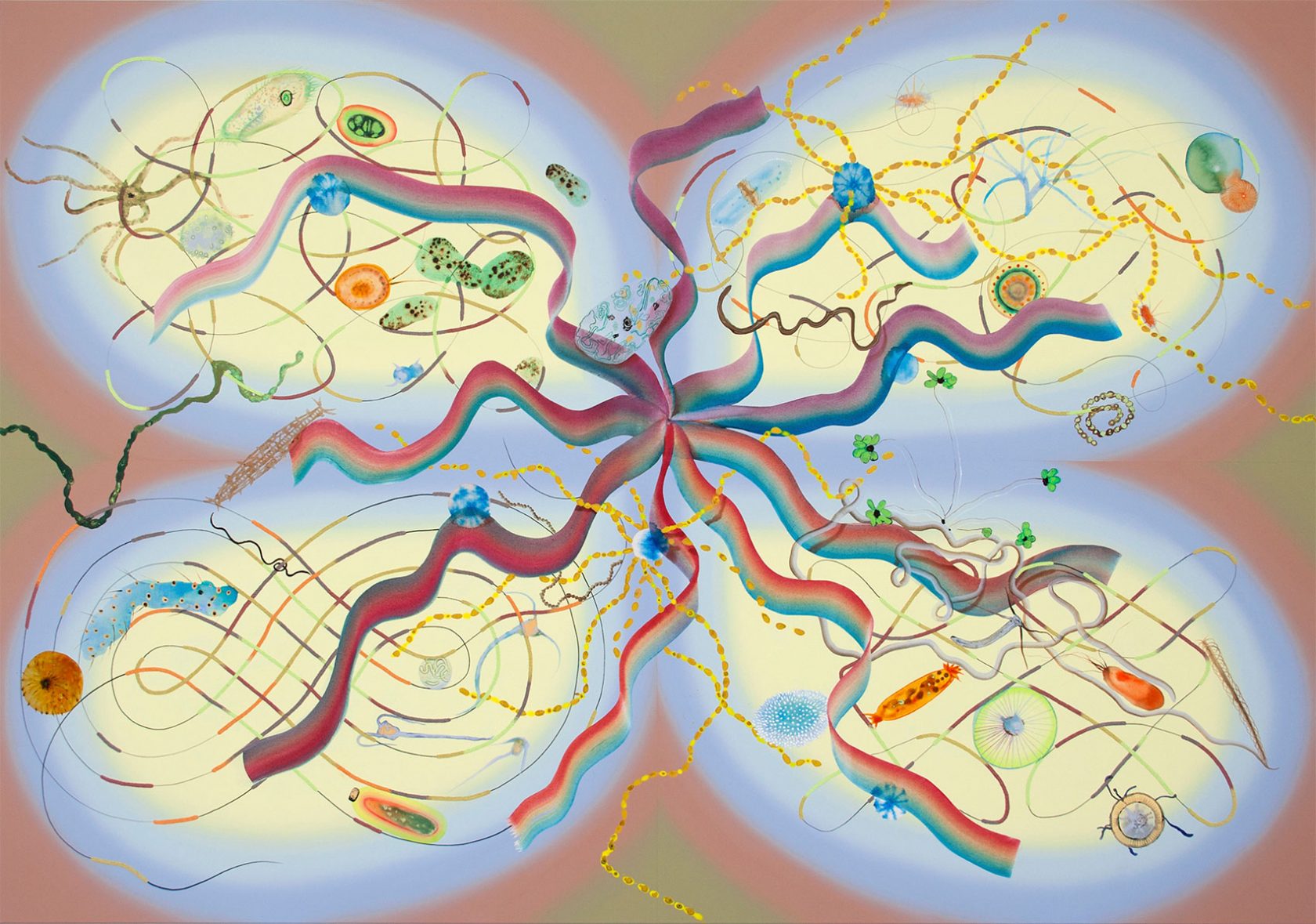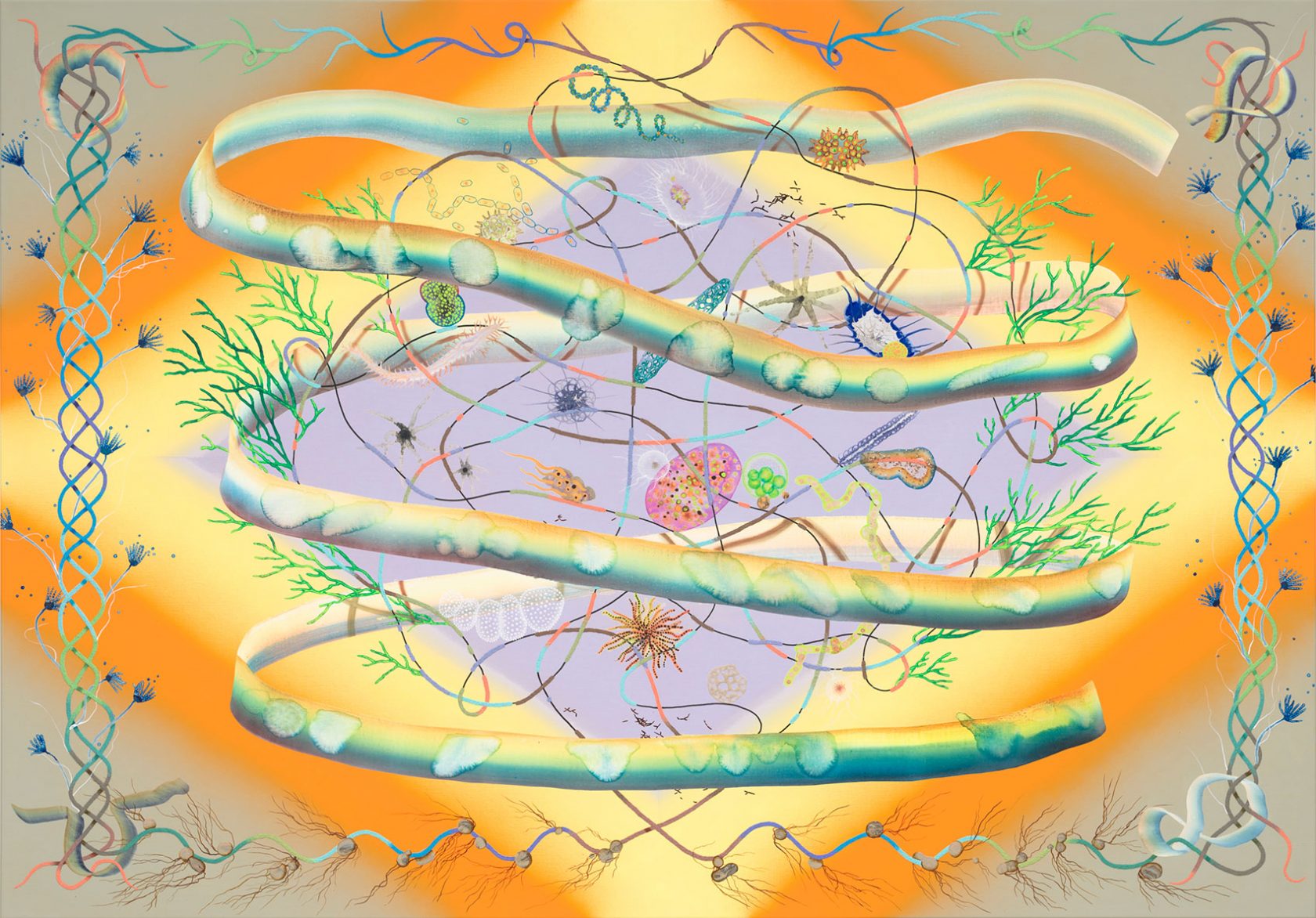A review on Simone Albers’ “Myriad Ways of Being”
By Keeley Haftner
I stopped writing pro bono about art and artists after the birth of my first child last October, but felt compelled to break this streak in order to review Simone Albers’ exhibition Myriad Ways of Being ~ Being of Myriad Ways as it was installed this November at Galerie Maurits van de Laar. This too is unusual, since the show largely featured painting – a discipline about which I am rarely moved to write. Having seen only flattened documentation of the work prior to the exhibition, my expectations were measured. But in person, Albers’ painting is an entirely different beast. This is why it is such a shame that the exhibition lasted a mere two weeks in van de Laar’s commercial space (though on the bright side, you can currently catch the fantastic Amsterdam-based Susanna Inglada’s exhibition there through 14-01-2024).


At first glance, the exhibition read rather inoffensively as “art”: paintings on the wall and sculptures on the floor, with a dusting of site-specific installation via the contemporary practice of painting directly on the wall to invigorate the space. Through her paintings, however, Albers was quick to invite the viewer in for a closer inspection. From afar, they read as colourful, fashionable abstractions with clear reference to scientific imagery, but with seemingly equal weight placed on decorative and playful painterly jubilance. Stepping closer, however, the viewer immediately notes Albers’ adept approach to paint as a medium in the literal sense of the word: a substance in which to suspend another substance, most often pigment, in the case of paint.

Here, bacteria rendered from mixtures of sand and paint worm and weave their way around the picture plane like so many layers of living yarn. There, Voronoi’s of sand and clear binder exist strangely between abstracted and depicted space, while rainbow ribbons of cellulose (or something) snake about like eels, indicating movement through flexes and washes of thinned oil and acrylic. A young painter, there is room for growth here in Albers’ depictions, not all of which achieve this deft painterly sleight of hand. Yet in its least self-conscious moments, Albers’ subject matter and medium become one, as when a squirt of some clear acrylic gel becomes a microorganism, casting its shadow in precisely the same way single-celled creatures do when observed through a microscope. It is here that a strange form of re-inserted three-dimensionality in fabricated flatness emerges. And it is here that I had my aha! moment with Albers’ work.


The answer to the question “Why must I see Albers’ work in person?” has a similar answer to “How is painting like looking through a microscope?”. Put simply, both are efforts in abstraction as extensions of the human body. Her sculptures are compelling (and indeed, I’d miss them if they weren’t there), but painting is the perfect medium for this body of work. Jean-François Lyotard once remarked that “the ear is the material for the reception of the message,” and so too it follows that the eye is the material for the reception of the image. Through her paintings, Albers’ reminds us that – like coloured mud blobbed on hair attached a stick held by a hand smearing it into fabric – our imagery of the microscopic is highly abstracted, and relative to our all-too-human senses.
To achieve such images, a soft-bodied vertebrate (a ‘scientist’) arches over a microscope to line up their ocular lens with several other lenses, thus rendering their invisible subject visible. In a recent publication by Jap Sam Books eponymous to this exhibition, art historian and former editor-in-chief for Metropolis M Loes van Beuningen writes that Albers’ previous cosmological series also makes “the invisible visible.” But in this latest body of work, it is her source material that does this. The paintings attempt something more. As with paintings created prior-to and around-the-advent-of linear perspective, Albers’ Terra Incognita’s exert a non-hierarchical approach to space and subject akin to Hieronymus Bosch’s famed The Garden of Earthly Delights, or Giovani de Paolo’s myriad strange, flattened works. Meanwhile, in physics, the “observer effect” is used to describe the disturbance of a subject by simply observing it, like a crackling twig under a hunter’s belly as she observes her prey. Rather than mitigate this effect, Albers both underscores and heightens it. Here I am, interpreting and abstracting, she says, and here science is, doing much the same. A three-dimensional microbe is suspended in a medium (an immersion oil) and sandwiched between two surfaces (rectangular glass), where it is thereby rendered two-dimensional. That image is then captured, heightened, isolated and often even coloured or illustrated in post-production to create something comprehensible to the layman’s eye. Is the artist a citizen scientist, an illustrator, a decorator, a hobby philosopher, or painter? Yes, her work seems to say.

Biologists are forever chasing their own tails in nomenclature, attempting to categorize, separate, merge, and further distinguish living things that don’t care a lick about human systems (think of the binary breakdown of life and non-life between viruses and bacteria, or the platypus – a semi-aquatic, egg-laying mammal – among innumerable other instances). Similarly, philosophy has its committed diehards on either side of the ontological [matter as it exists] and epistemological [matter as it is interpreted] divide. If there are myriad ways of being (noumenal-being, phenomenal-being, tool-being, etc.), why must we choose?
Happily, painting is uniquely suited to both interpret and be, since it is all but screaming its simultaneous affectation and sincerity in a single, impassioned, anthropocentric refrain. Each painting in Myriad Ways of Being ~ Being of Myriad Ways reads as a visual Latour litany of microscopic matter outside of human construct, as viewed through the shadows of Plato’s cave. Yes, and.
Myriad Ways of Being ~ Being of Myriad Ways by Simone Albers was on show from 08 until 26th of November 2023 at Galerie Maurits van de Laar, Toussaintkade 49 in The Hague.